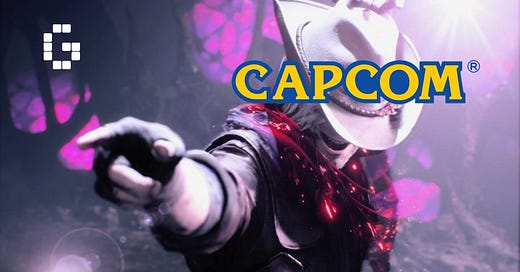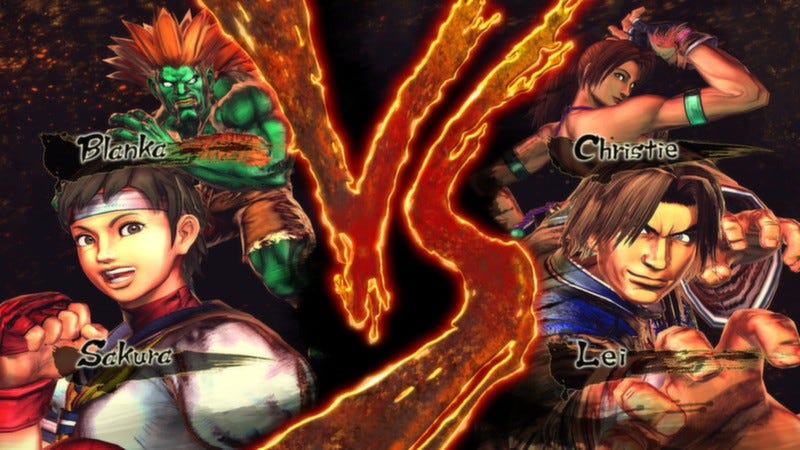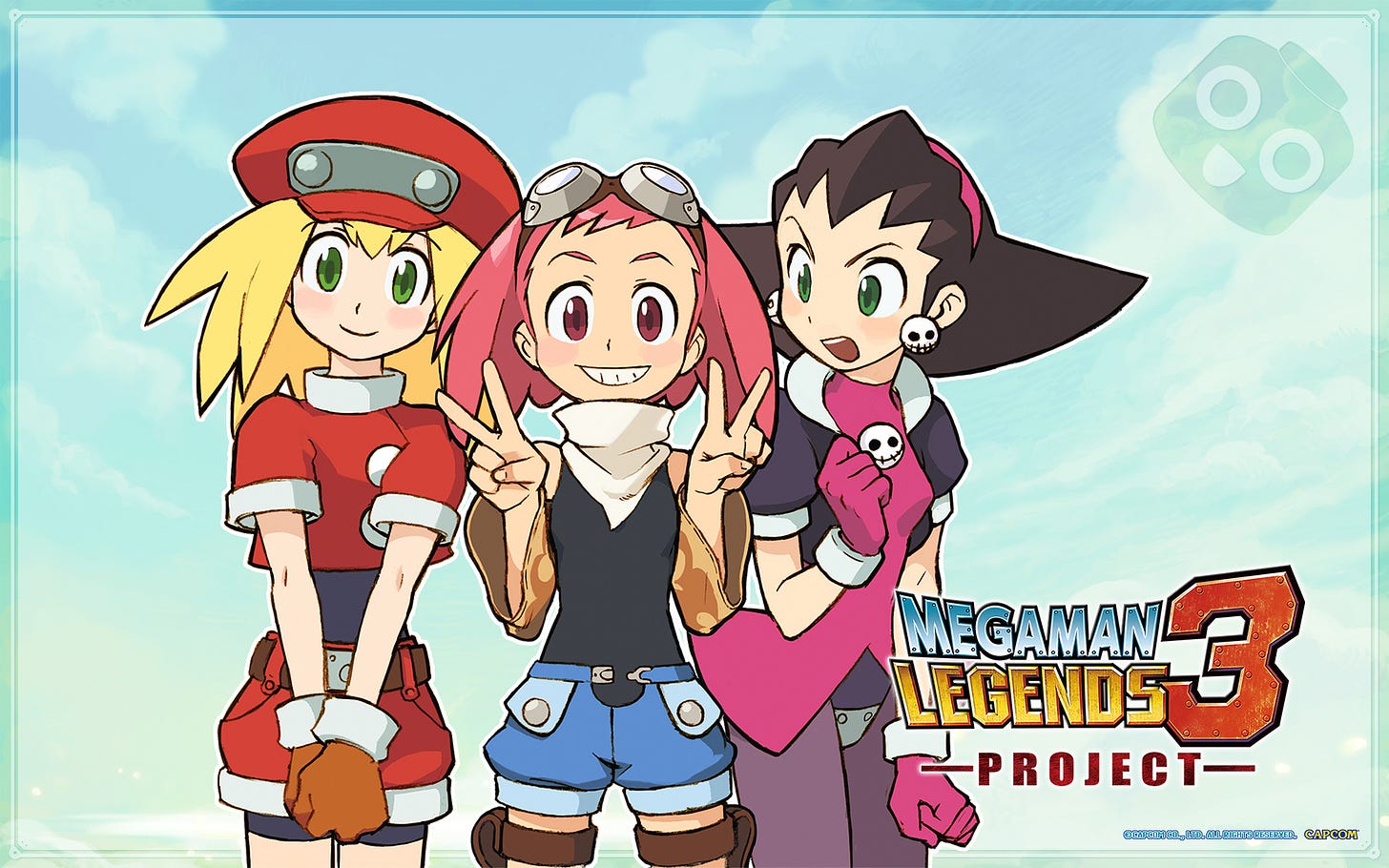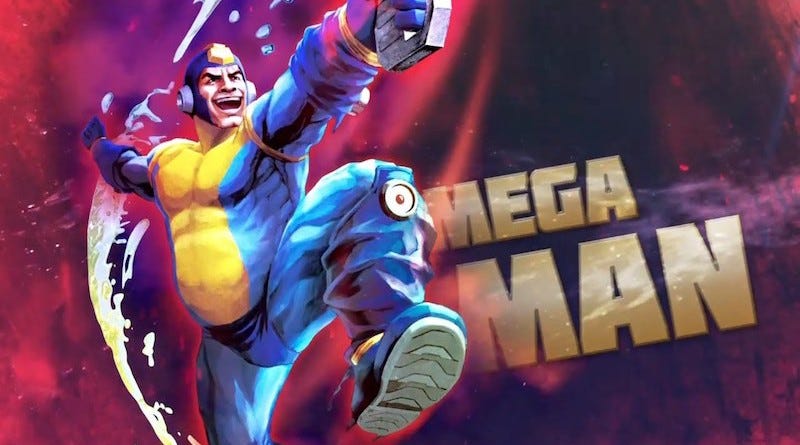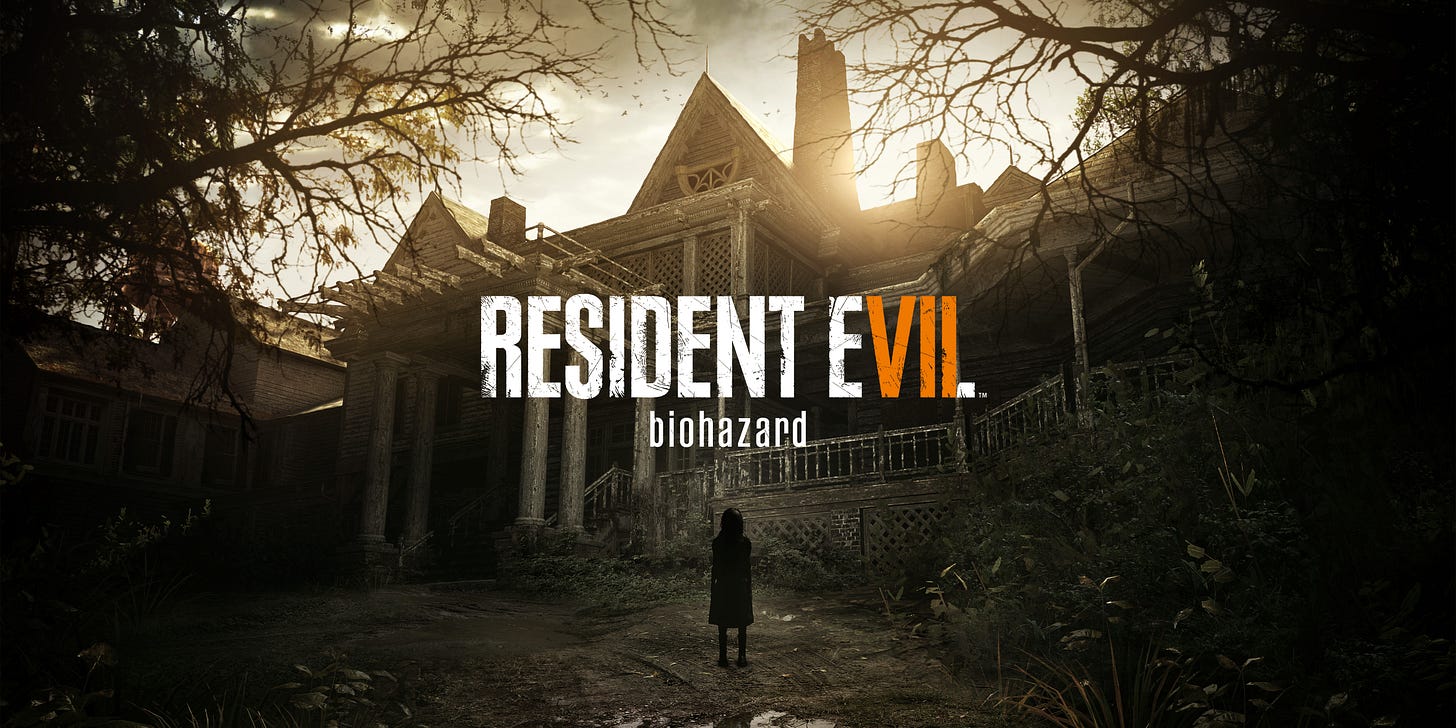GamerBraves Newsletter vol. 45 – How Capcom Went From Crapcom To CapGod
So Capcom or "CapGod" as they're often nicknamed are doing pretty well nowadays. Multiple critically praised Resident Evil games, Getting Monster Hunter to blow up in the west, bringing Devil May Cry back, and even Ace Attorney is doing pretty well. It's pretty surprising when you remember that only around a decade earlier, Capcom was one of the most disliked triple-A publishers in the industry.
"Crapcom" as people called them in the late 2000s and early 2010s seemed like they couldn’t do anything right: bad DLC practices, canceling anticipated new games, and a backward policy of appealing to westerners that didn't really appeal to westerners. And yet they managed to turn it around. So, how did they do it?
The dark age of Crapcom started around 2009 and can be thought off as three categories:
DLC
The 7th generation of consoles (Wii, PS3, 360) was not an easy time for developers. Many were still getting used to the much higher cost of developing HD games, and online games and wanted to find ways to squeeze as much profit out of titles as possible. One answer to this was the emergence of DLC and Capcom went all out in the worst way.
The first DLC issue was with Marvel vs Capcom 3 with Jill Valentine and Shuma Gorath being announced DLC characters who were already on the disc. You only paid for a code to unlock them. This became an even bigger controversy with their next fighting game Street Fighter X Tekken. When SFXT came out it was found that an extra 12 characters were hidden away on the disk that was meant to be released as DLC alongside the Vita version of the game.
The wasn't even exclusive to fighting games. Asura's Wrath, one of the better games Capcom published to come out of this period actually had its ending hidden away behind a DLC paywall. Many gamers thought Capcom came off as greedy as they were basically sectioning content that was already made just so they can sell it for more cash.
Appeal to The West
The other pain spot for Capcom was their attempted policy of 'globalization' or appealing to the west. This was a movement spearheaded by Keiji Inafune, a long-time producer at the company.
It was found that international audiences were becoming a far bigger market than Japan. According to reports Japan had gone from making up 50 percent of all global video game sales in 2002 to only 10 percent in 2010. According to Eurogamer, Inafune believed that for Capcom to remain profitable, they had to adapt to a more global western market. A large part of this policy included outsourcing projects to smaller western developers so that they would better suit the intended market.
In all fairness, this did lead to some good games like the Dead Rising and Lost Planet series however the majority of these games like 'Dark Void' (2010) and the Bionic Commando Remake (2009) were bland, uninspired attempts to recreate western action shooters that lacked the charm of their Japanese counterparts.
This culminated with the highly controversial DMC: Devil May Cry, a reboot of the Devil May Cry series featuring a grungier, douchier, smoking, Dante without any of the charms of his white-haired predecessor. Alongside more simplistic gameplay and a few snide comments at fans, it's no surprise that the game bombed hard.
Mega Man
There was one final area that caused trouble for Capcom and that was Mega Man. He may not seem like a big deal nowadays but in the early 2010s, he was still considered to be Capcom's mascot.
There were five games planned for Mega Man in 2010: Mega Man Universe, Mega Man Online, Mega Man Legends 3, Mega Man Star Force 4, and Maverick Hunter, and one by one, they were each canceled. And shortly after this guy appeared in Street Fighter x Tekken.
Nowadays, we know that many of these games were canceled for very different and understandable reasons and the Box Art Mega Man in SFXT was just down to bad timing. At the time though, fans saw these cancelations as an insult and proof that Capcom no longer respected its fans or franchises. It also doesn't help that Capcom posted a tweet blaming the cancellation of Mega Man Legends 3 on a lack of fan interest, something that never looks good.
At this point in time (2010) Keiji Inafune, who produced the Mega Man franchise had actually left Capcom and continued a tirade about how "Japan is dead", how the country produces nothing but bad games, and how Capcom, in particular, was filled with salarymen who refused to take risks. You know, despite the fact that they were acting on policies that he put in place.
He used the Mega Man debacle to further promote his upcoming Kickstarter game Mighty Number Nine, which he described as the Mega Man game that fans always wanted.
Changing to CapGod
Even as early as 2009, Capcom developers already believed that the appeal to the west strategy was not working and their over 70 percent sales drop proved it. After DMC, it seemed Capcom was done, they would now focus primarily on in-house titles.
Now imagine you’re at E3 2017, a new chilling horror title is showcased, and then the title flashes: Resident Evil 7. That was the turning point for Capcom. From there the hits seemed to keep coming in with Monster Hunter World, Resident Evil 2 Remake, and Devil May cry 5, returning the franchise back to the original series with the original Dante we all know and love. We even got a new Mega Man title with Mega Man 11. Capcom was now CapGod.
While the shift to working on in-house titles definitely helped keep things organized, it should be noted that Capcom never stopped attempting to appeal to the west. It's more that they realized what it is westerners liked about their games (ie that they're Japanese) and combined that with fresh and appealing western inspirations and in-house western input.
Resident Evil 7 goes back to classic survival horror but also makes use of a first-person perspective like many popular indie horror games being made around the time. It is also the first Resident Evil to be written by western narrators at Capcom Vancouver.
Capcom Europe COO Stuart Turner said in regards to Resident Evil 7 "Where we've had our best success in recent years is blending classic Japanese game design with a more Western aesthetic, It's about very much continuing this with future products.”
The Future of Capcom
As I said at the start of this article, Capcom is in a good place. Street Fighter 6 looks great and Resident Evil 4 looks surprisingly fresh. They’re even creating new IPs like Pragmata and Exoprimal. There has been trouble like the Street Fighter V launch and I would like to see some of their old IPs return (new Darkstalkers pls) but overall I can't complain.
In some ways perhaps the Crapcom era was a good thing. It showed Capcom what fans on a global scale liked and didn't like about their games which likely helped in informing the CapGod renaissance we see today.
And what happened to Keiji "Japan is Dead" Inafune? Well, Mighty Number Nine flopped due to a mishandled Kickstarter and now he's making NFTs. The CapGod arc started a year after Mighty Number Nine was released in 2016. What Irony.
What We’ve Learnt:
Capcom faced backlash in the late 2000s and early 2010s for their bad DLC practices and misguided attempts to appeal to the west
They outsourced projects to western developers that did not take off.
They rectified this by focusing on in-house projects with western input and influences while still keeping to Japanese core design.
Feature by Alex Daud Briggs
Put your glass on…
Blizzard is being put through hell
Why are players so afraid of this little bird?
How did you find this issue of the GamerBraves Newsletter? Leave your comments below or let us know your feedback privately.
Want more GamerBraves content? Simply follow these links:
